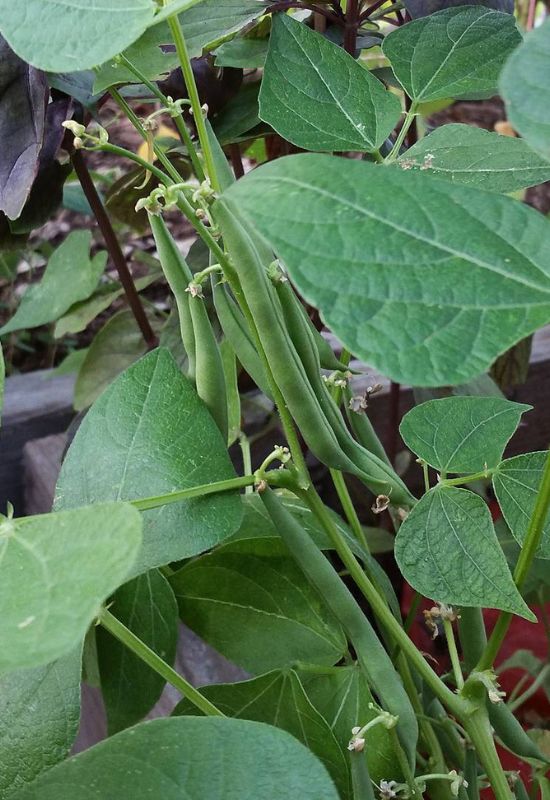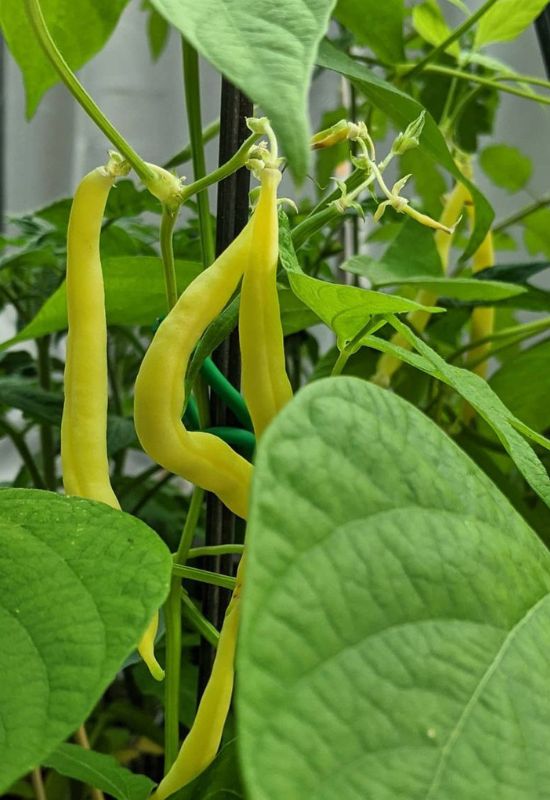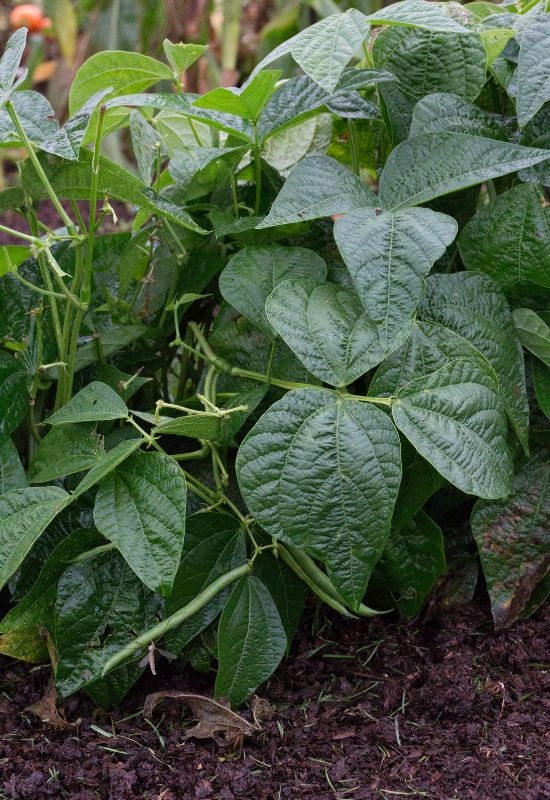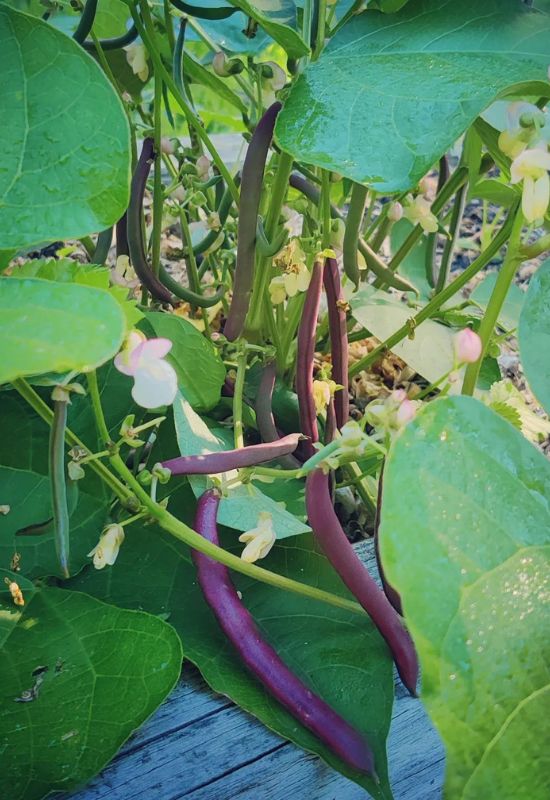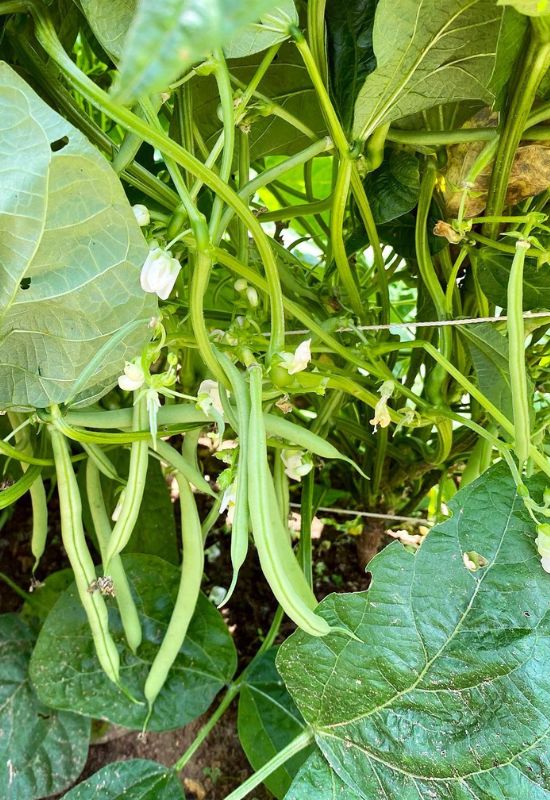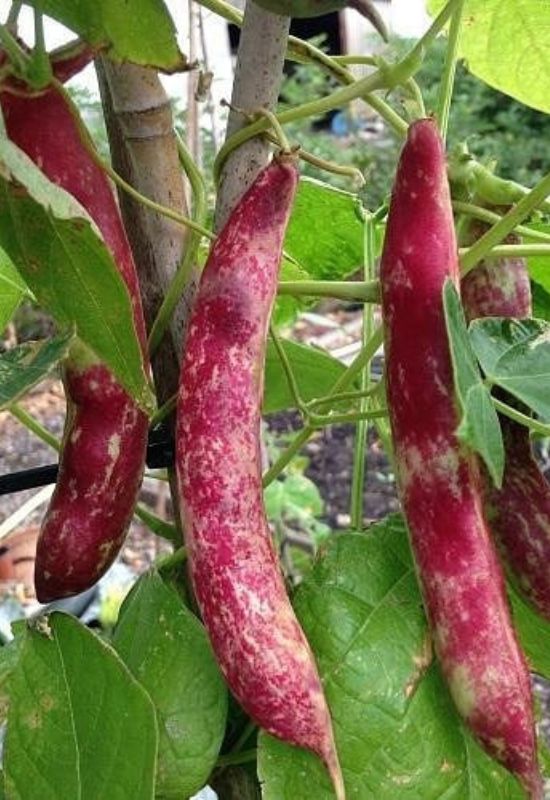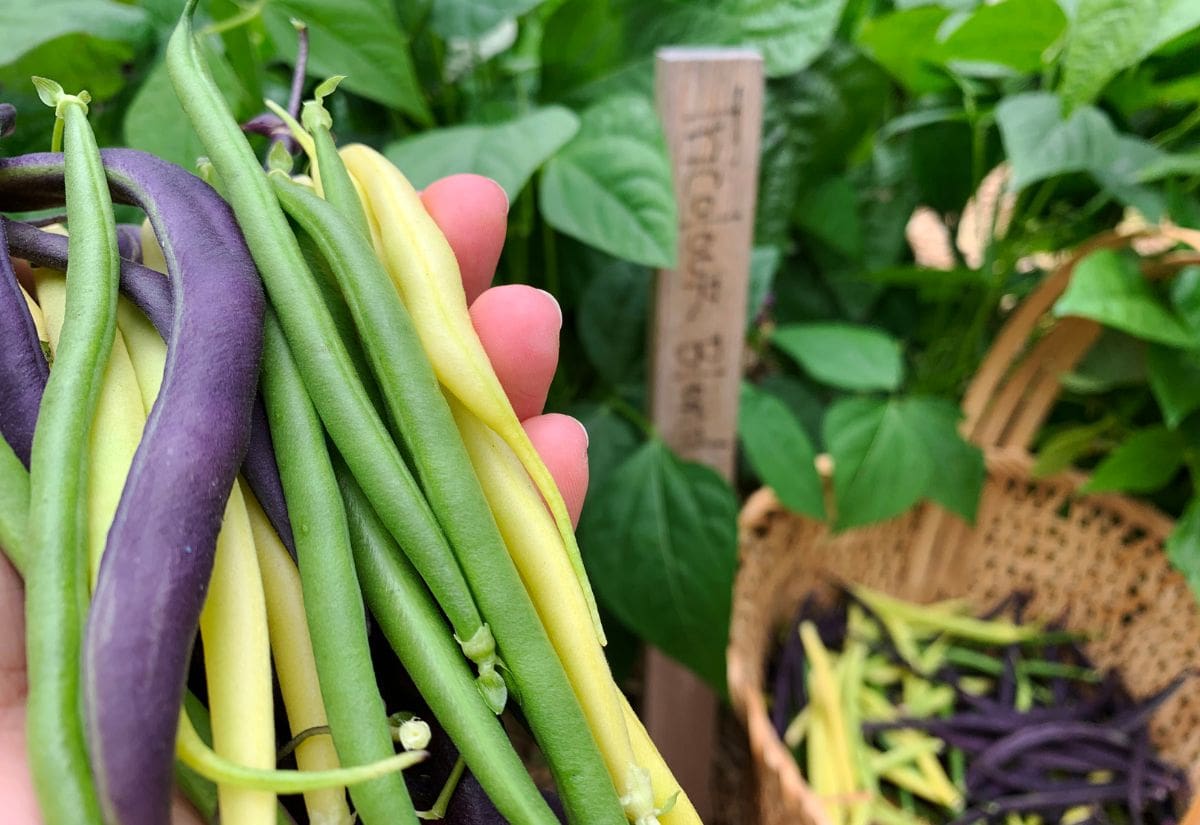
When it comes time to order seeds for your garden, don’t forget to include some bush beans. Instead of growing all long and viney like their climbing cousins, bush beans grow into compact little bushes, usually not much taller than two feet. They’re super low-maintenance, standing up on their own without needing any support.
Plus, they’re awesome for getting a bunch of beans pretty early in the season.
There are countless bush beans you can grow and each will bring its own unique addition to the garden (and kitchen). I love growing, and writing about beans, so here are 14 of my favorite bush bean varieties to grow and eat, plus some growing tips for a successful harvest.
8 Reasons Why Bush Beans Deserve a Spot in Your Garden
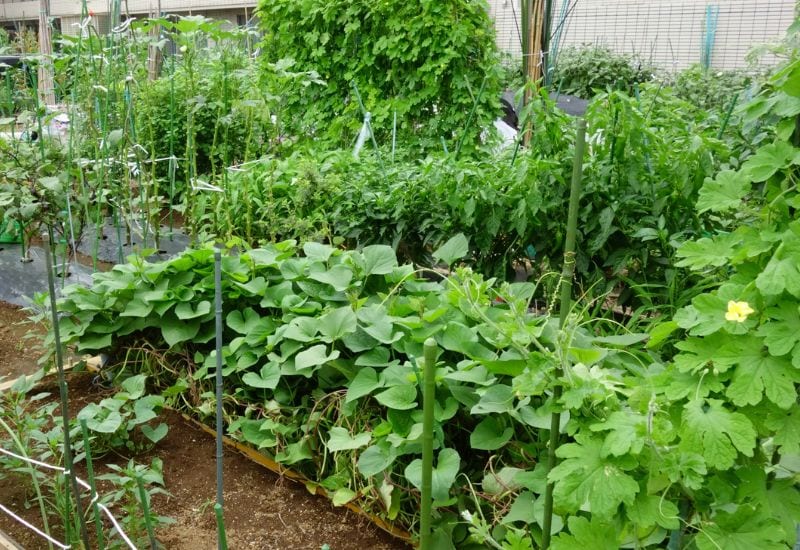
Bush beans are determinate. They will stop growing when they are about knee high and their sturdy stem keeps them standing erect. Bush beans will produce an excellent harvest in a short time.
Whether you have a balcony, backyard garden, or large market garden, there are a lot of bonuses to growing bush beans, including:
Here Are Some of My Favorite Bush Beans to Grow
There are many different types of bush beans to choose from. They can be snap beans, drying beans or both, and they can range in color from green to yellow, purple to multicolored pods.
Here’s a shoutout to 14 bush bean types which are breeze to grow, loads of fun to harvest, and oh-so-yummy to chow down on.
1: Campo di Fiori Romano
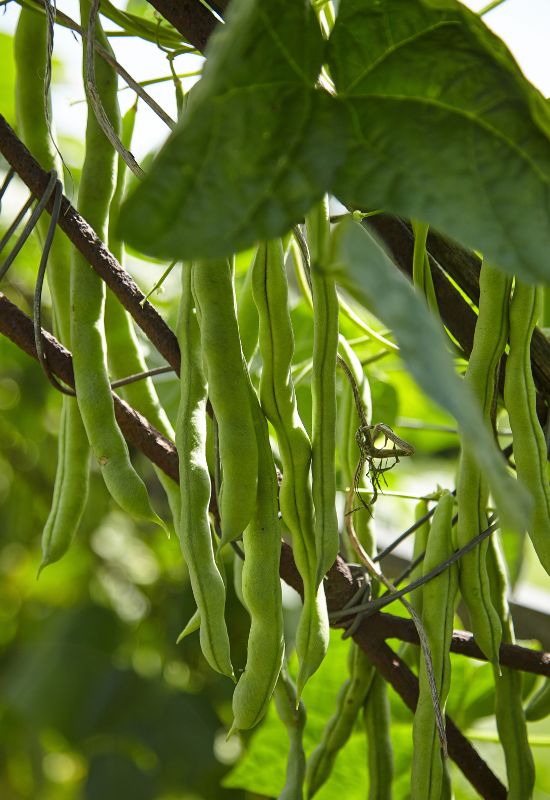
If you love Romano beans but aren’t able to provide the large trellises they require, then Campo di Fiori are for you.
Because they are a Romano, the bean pods are flat and broad with nearly stringless seams. Their only disadvantage as a Romano is that they yield slightly less than their vining cousins.
This Italian variety takes 58 days to mature and each bean is best picked around 15cm (6 inches) long before the seeds begin to fill out. If left on the vine too long, they can become quite tough, but when picked early they have a great full flavor.
They are very nice fresh, and they also keep their exceptional taste after canning or preserving.
2: Cantare
This French variety matures quickly and is ready in 50 to 55 days from germination. The pods are stringless, slim, and reach about 10cm to 12cm (4-5 inches) in length.
Give Cantare full sun exposure, and plant the seeds between 1cm to 2cm (1/2-1 inch) deep when the soil has reached 21C to 26C (70-80F). For best germination, consider soaking the seeds in water overnight.
While many bush beans can be affected by disease, Cantare are exceptionally tolerant of bean mosaic virus.
3: Carson

These wax beans have a butter-yellow colour and mature in 50 to 55 days. The pods are about 14cm (5.5 inches) long and slender and straight.
They are stringless with a great flavour and a crisp texture and are good for fresh eating, and boiling. They store longer than some other varieties and they also freeze very well.
These high-yielding plant grows to around 30cm to 70cm (13-28 inches) tall and 40cm to 50cm (15-18 inches) wide.
They produce lots beans in large clusters that are easy to harvest. Carson are slow to become fibrous if you are not able to harvest them right away, which is ideal if you are a busy gardener or working during the week.
If you have had trouble with diseases in the past, then try growing Carson as they have quite good resistance to Anthracnose, Bean Mosaic Virus, and bacterial brown spot
4: Celine
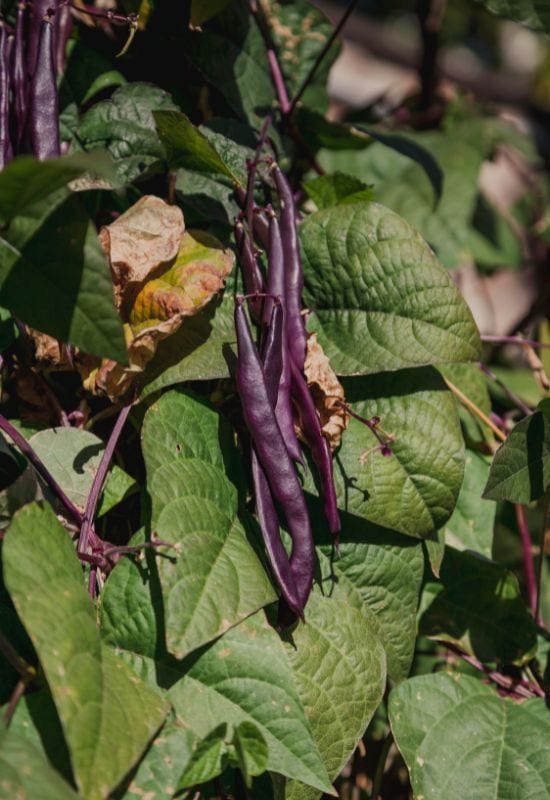
Celine are a great purple bush bean to grow. The pods are brighter than many other purple beans and have bright yellow interiors. The pods stringless and slim, measuring around 65cm (1/4 inch) in diameter, and only 9cm to 12cm (3.5 – 4.5 inches) long.
The plants are semi-dwarf, and the bright beans are easy to harvest from the open habit bush. The seedlings are very strong with vigorous growth and the begin to set pods very early. Harvest can usually begin 58 days after the seeds germinate.
Celine are very resistant to Bean Mosaic Virus but make sure to still follow a 3- to 4-year crop rotation to keep diseases from becoming an issue.
These beans have a lightly sweet, nutty flavor and are a great addition to the garden. As with all purple beans, the color will, unfortunately, fade or vanish with cooking but the flavor remains as delicious.
5: Dragon Tongue
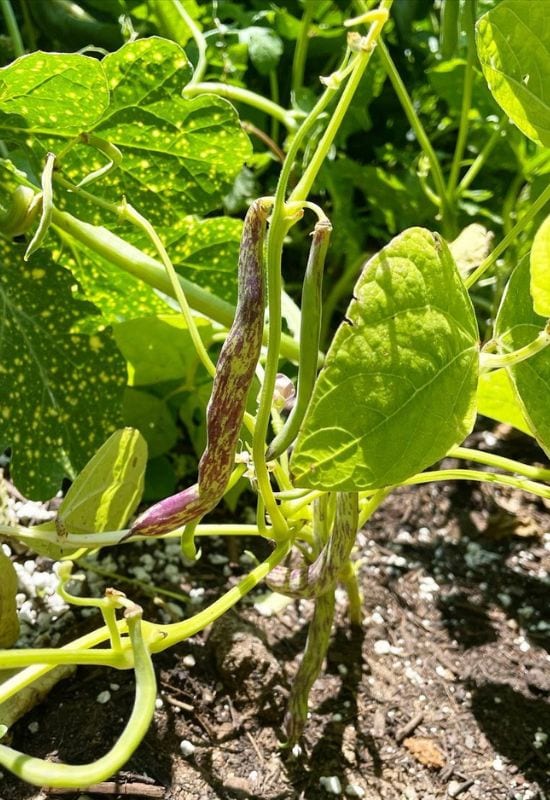
This was the first multi-colored bean I ever grew, and it is always fun to go back to. Also known as Merveille de Piemonte, Dragon Tongue pods start off bright green until they turn pale yellow bean splashed with purple streaks.
The beans are tender and sweet that are excellent fresh, cooked, or for freezing, though unfortunately the purple will disappear when cooked and look like a yellow wax bean. The beans are flattened and about 15cm to 20cm (6-8 inches) long.
Dragon Tongue can also be left on the plant until fully mature and harvested as a dry bean. The beans are light brown with dark red markings.
Dragon Tongue are a Dutch heirloom that have been around since at least the early 1800s. They are ready to harvest at around 57 to 65 days for fresh eating, and each plant is very prodigious and produces lots of beans.
6: Gold Rush
This magnificently flavored yellow bean is one of the most popular wax varieties you can grow and for good reason. With an incredibly mild flavor and crisp textures, Gold Rush beans are very versatile and can be used fresh, cooked, canned, or frozen.
When mature after 58 days, the 12cm (5 inches) straight beans are bright yellow with green tips. (The green tips might be confusing the first time you grow them: I once waited and waited for them to turn yellow and ended up with over mature beans!).
Thankfully, they do not go tough on the vine very easily so you do have a bit of leeway at harvest time.
Gold Rush beans form in clusters on medium sized plants making them easy to harvest. They also have good resistance to Bean Mosaic Virus and root rot.
7: Kidney Bean
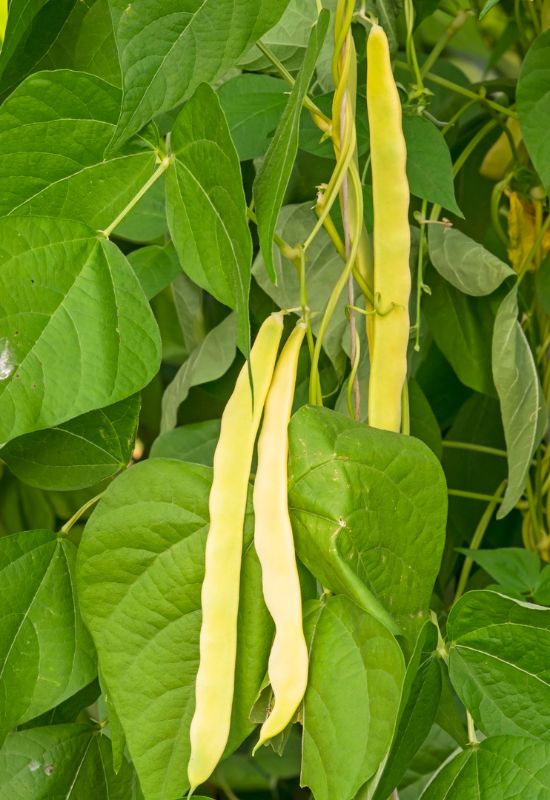
Kidney beans are by far the most commonly used dry bean in North America, and they are a really fun bush bean to grow. They come in two general types: Light Red and Dark Red.
The light red have a thinner skin and both are aptly named for their resemblance to the human kidney (my personal preference is for the Dark Red but both are wonderful).
Kidney Beans are firm when cooked with a creamy texture and amazing flavor. They are very high in protein and are a valuable addition to any diet where they have been enjoyed since the 1800s.
Each plant stands about 60cm (2ft) tall and produces lots of beans. Each pod contains 5 beans and they take around 100 days to fully mature and dry from germination.
Some growers find their beans are ready to be pulled at around 85 days and they can finish drying indoors, so they can be grown in cooler, northern gardens with good success.
Kidney beans are also widely adaptable to different climates, and they even have good production in cool wet climates
TIP: If wet weather is in for forecast, pull the whole plant and hang it upside down in a room with good airflow to finish drying.
8: Masai
An early producer, Masai are ready to harvest in 47 to 55 days. The dwarf plants only stand 30cm (12 inches) high but produce lots of 10cm (4 inches) green beans in a concentrated set near the top of the plant.
They are a good bean, with a nice flavor and excellent texture, but make sure to harvest them as soon as they are ready or they will become flavorless and fibrous.
The pods are sweet and stringless and they also freeze very well. Masai are heirloom beans and they are great for field growing and are well suited for containers due to their short stature.
Masai are another disease-resistant bush bean and will combat Bean Mosaic Virus, Bacterial Brown Spot, Common Rust, Curly Top Virus, and halo blight.
Even so, make sure to provide adequate space to allow airflow and sunlight to get in and keep diseases from spreading. Also, practicing a 4-year crop rotation is also very important to keeping your garden problem-free.
9: Maxibel
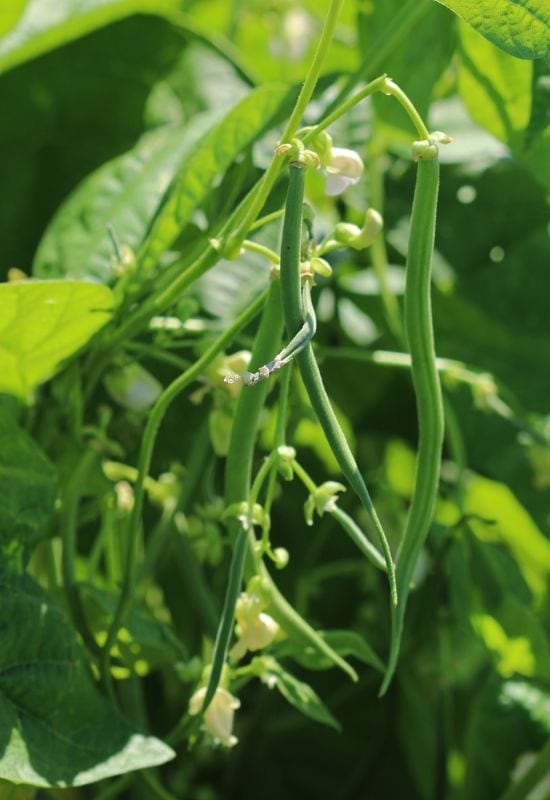
Maxibel are another very popular bean. If you grow beans for a long time, you will probably give them a try at some point and they are well worth it.
The dark green beans are around 18cm (7 inches) long and very slender which makes them look even longer. They have a great texture, either fresh or cooked, that is paired with an excellent flavor.
Maxibel mature in 50 to 55 days on an upright bush. I am always surprised how sturdy the plants are, especially when loaded with beans.
Make sure to harvest while the beans are still skinny and before seeds form to prevent them from becoming fibrous.
Not only do Maxibel produce lots of beans, but they produce them all in a concentrated set. To make sure you have beans all season long, succession plant more beans every 2 weeks.
10: Provider
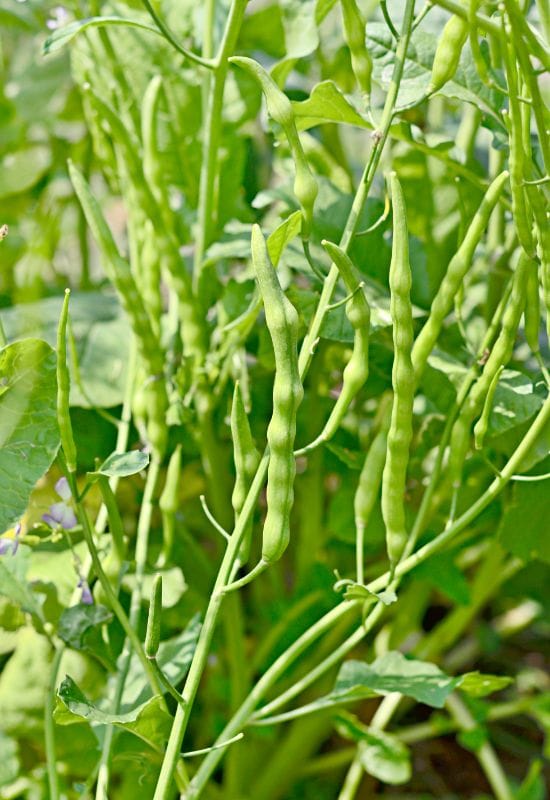
As the name suggests, Provider will give you lots of beans in a very short time. Not only do the beans mature quickly in 50 days, but they are very tolerant of cool weather and will even germinate in cool soil.
This means you can get them in the ground earlier than any other variety. You will have beans ready for market earlier than your neighbors and you can succession plant to have beans all summer long.
Provider are a round green bean that average 12cm to 15cm (5-6 inches) with purple seeds. The compact plants grow no higher than 45cm (18 inches) and are bedecked with pretty pink flowers. Most of the flowers grow in pods clustered near the base of the plant.
Provider grow well in most soil types and climates, making them a very versatile bean no matter where you live.
They are also resistant to Bean Mosaic Virus and powdery mildew. They have a great flavour for fresh eating and cooking and they also freeze very well.
11: Red Swan
A truly magnificent looking bean, this heirloom has deep red pods with green tips. Before the beans form, the plants are covered in light pink flowers.
Ready to harvest in around 55 days, they are stringless with great flavor. Check out this link to see how beautiful Red Swan beans really are.
12: Serpedor Wax Romano
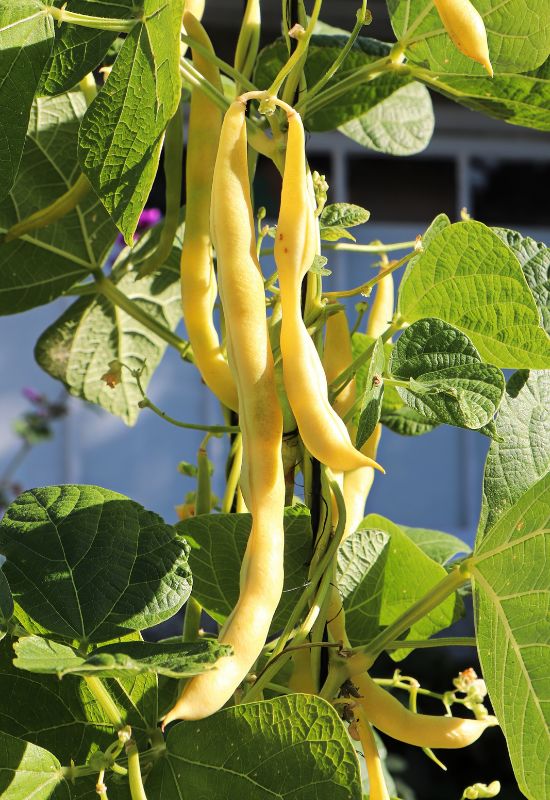
Serpedor Wax Romano are a flat yellow bean that are around 12cm to 15cm (5-6 inches) long. The pods are stringless with a rich, full flavor and mature in around 75 days. Thankfully, these beans have a longer harvest window than many other bush beans so they are well worth the wait.
The plants are compact and stand around 45cm (22 inches) tall. They are well suited for growing in pots, and they also do well out in the garden.
13: Strike
These are a staple bush bean in our garden. They are a heavy yielder of 12cm to 15cm (5-6 inch) medium green beans that are ready in around 50 days. The smooth, slender pods are quite uniform and stringless. Most of the pods form in a concentrated sed, and you have a long window for constant picking.
They have a great flavor for fresh eating and cooking, and they are also great for canning, freezing, and they store longer than most beans in the fridge.
Not only are they a favorite in home gardens, but they are also favored by commercial growers due to their heavy yield and long storage quality allowing them to be shipped easily.
Strike have good resistance against Bean Mosaic Virus. They do not handle damp environments very well, so make sure to space out the plants if you are expecting a rainy year.
14: Taylor Horticultural
Taylor Horticultural are probably my favorite bean of all time. They are delicious as both a snap bean and a dry bean, and they grow very well as both in my cold short season in the Canadian Prairies. They are one of the earliest dry beans I have found and they are extremely fun to grow.
The short compact plants reach 35cm to 45cm (14-18 inches) and start off with pretty light pink flowers. These turn into cream and red pods that are around 15cm (6 inches) long that can be eaten in about 50 days.
Then, 80 days after germination you can harvest pods full of small, buff beans streaked with red. They are easy to hull once they are dry.
On cold wet years, we have harvested them before they were fully dry and finished drying them indoors which worked exceptionally well. Once dried, the beans store very well for a long time. The beans have a creamy texture when cooked and a nutty flavour.
Italian immigrants probably brought Taylor Horticultural to North America in the early 1800s, and I am very glad they did!
How To Grow Bush Beans
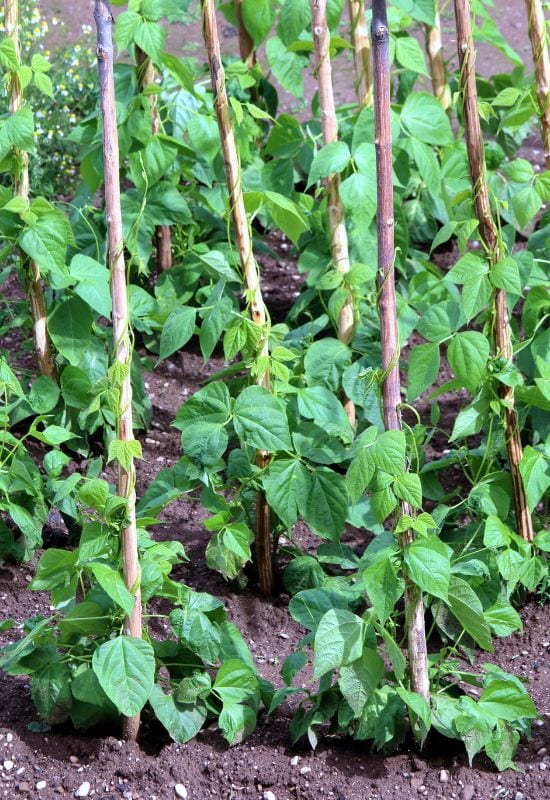
Beans are incredibly easy to grow. Unlike their vining cousins, bush beans do not need trellising, and they will grow a very decent crop with little more than attention to detail when planting, watering, and weeding.
Here are some tips to get your bush beans off and running:
Prepare a seedbed that drains well as beans rot easily with wet feet, and try to provide a soil pH between 6.0 and 6.5.
Direct sow bush beans once all danger of frost has passed. Alternatively, you can start your seeds indoors for transplant, but make sure to provide lots of light or the seedlings will become leggy.
Beans germinate best when the soil is between21°C and 32°C (70-90°F) and the seeds will take 8 to 16 days to emerge. Some of your seeds may rot if the weather turns wet and cool after planting, so resow any spaces that did not come up.
TIP: If the temperature rises over 32C (90F), beans will often drop their flowers. If heat you get a wave during peak flowering, you can lose the entire harvest, so time your planting so the bulk of the flowering is done when hot summer weather hits.
Set your seeds 2cm to 5cm (1-2 inches) deep. If bean seeds are planted too shallow they will often pop out of the ground once they swell with water.
I like spacing my bush bean seeds around 15cm (6 inches) apart. Many gardeners like to plant their seeds closer and then thin them down to the strongest seedlings once the plants are established.
Rows of bush beans can be anywhere from 30cm to 60cm (12-24 inches) wide. I prefer the closer spacing but this can depend on the variety you are growing and your planting method. If disease is an issue, give your plants more space to ensure good airflow and sunlight to keep the area around the plants dry.
Harvest bush beans when pods are mature but before the beans have started to swell. Unless of course, you are letting them mature for dry beans, then allow the pods to fully mature and dry on the plant if possible.
TIP: Avoid planting bush beans with alliums as they are not good companions.
Conclusion
With all the different plants to choose from, seed catalogs can be a little intimidating especially if you have never grown a certain type of vegetable before. Hopefully, this list will help you select just the right variety for your garden, so you will have a successful growing season and a pleasing harvest.

Written By
Amber Noyes
Amber Noyes was born and raised in a suburban California town, San Mateo. She holds a master’s degree in horticulture from the University of California as well as a BS in Biology from the University of San Francisco. With experience working on an organic farm, water conservation research, farmers’ markets, and plant nursery, she understands what makes plants thrive and how we can better understand the connection between microclimate and plant health. When she’s not on the land, Amber loves informing people of new ideas/things related to gardening, especially organic gardening, houseplants, and growing plants in a small space.

